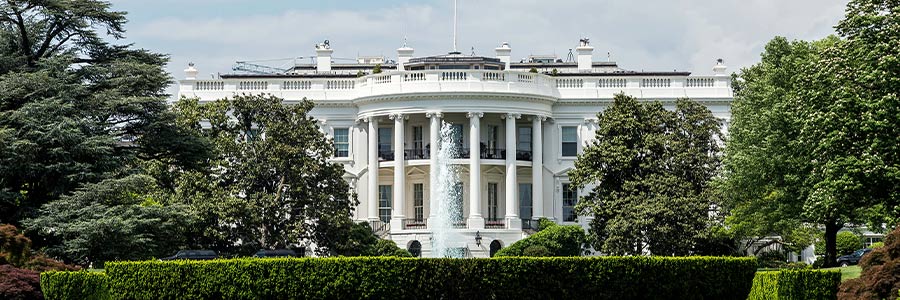Les budgets municipaux pourraient être moins solides qu’il n’y paraît
Par : Joe Giordano CFA, John Miller, Michael Anastasiou, Zain Khan CFA
nov. 26, 2024 - 4 minutes 30 secondes
Aperçu :
- L’augmentation globale des dépenses municipales devrait se maintenir dans une fourchette de moins de 5 %, mais nous avons constaté des révisions défavorables par rapport aux perspectives de l’an dernier.
- Les dépenses ont marqué un écart défavorable par rapport à l’enquête de l’an dernier et accusent un retard par rapport aux budgets de dépenses en immobilisations.
- Le traitement des substances perfluoroalkylées et polyfluoroalkylées dans l’eau est important, mais les délais de mise en œuvre pourraient s’avérer difficiles à respecter.
- L’augmentation de la demande du marché à l’égard des centres de données augmente le besoin en eau et pourrait mettre à rude épreuve les ressources locales.
- Les participants à l’enquête s’attendent à une réduction du financement fédéral des futurs budgets, en raison des changements politiques à venir.
Notre 10e enquête annuelle sur les dépenses municipales aux États-Unis a suivi les perspectives des municipalités partout dans le pays. Nous avons ciblé environ 50 municipalités. En plus des résultats de notre enquête, nous avons exploré les cas d’utilisation des technologies de refroidissement à eau dans les marchés liés aux centres de données.
Le point de vue de TD Cowen
Les résultats de notre enquête sont surprenants cette année. Compte tenu des fonds fédéraux et de la vigueur persistante de l’économie, nous nous attendions à des résultats globalement positifs. Toutefois, les budgets de 2024 ont enregistré une croissance inférieure aux prévisions par rapport à 2023 et les dépenses ont accusé un écart important. Ce résultat remet en question la perspective de croissance en 2025, pour laquelle on s’attend d’ores et déjà à un fléchissement.
Une croissance étonnamment faible par rapport aux prévisions pour 2024
Notre enquête de l’an dernier était très positive. Rien n’ayant fondamentalement changé au niveau des conditions économiques générales ou du financement fédéral du secteur, nous nous attendions à des résultats extrêmement positifs. Ce n’est tout simplement pas ce qui s’est passé. Étonnamment, la croissance réelle de 2024 a été inférieure à ce qui était prévu l’an dernier, avec ce qui s’est avéré, au cours des 10 années de notre enquête, être l’écart négatif le plus important par rapport aux attentes. Les dépenses, comparées au budget, ont également largement dévié.
En 2023, 88 % des répondants s’attendaient à dépenser plus de 60 % de leur budget de dépenses en immobilisations et 36 % s’attendaient à dépenser entre 80 % et 100 %. Cette année, presque tous les répondants s’attendaient à dépenser 60 % ou moins. Il s’agit d’une divergence défavorable importante, sans catalyseur évident. Même si les répondants prévoient généralement une croissance du budget d’environ 1 % à 5 % jusqu’en 2025, la croissance prévue de plus de 5 % du budget d’exploitation a presque été réduite de moitié en un an. Les révisions négatives par rapport aux prévisions initiales pour 2024, combinées à la faiblesse des dépenses réelles, nous mettent en garde contre les révisions négatives pour 2025.
Des fondations moins stables pour les dépenses municipales et pour la croissance
À l’occasion de notre 10e enquête annuelle sur les dépenses, nous avons directement reçu les prévisions budgétaires de 50 municipalités américaines, grandes et petites. Nous avons collaboré avec nos collègues du Groupe de recherche de Washington, TD Cowen, sur la progression des décisions politiques touchant l’ensemble du secteur de l’eau. Nos travaux indiquent que même si les dépenses en dollars restent saines, l’ampleur de la croissance récente s’est avérée inférieure à ce qui était attendu d’après notre enquête de l’an dernier. Les dépenses, qui étaient très élevées l’an dernier par rapport au budget, ont fortement diminué en comparaison. La croissance devrait se poursuivre en 2025, mais elle semble reposer sur des fondations moins stables que prévu.
Les points à retenir du récent événement Water Environment Federation’s Technical Exhibition and Conference (WEFTEC) soulignent l’importance du traitement des substances perfluoroalkylées et polyfluoroalkylées dans l’ensemble du secteur, bien que beaucoup s’attendent à ce que les échéances actuelles soient trop optimistes, compte tenu de la technologie actuellement disponible (principalement du côté des tests et de l’élimination).
Notre rapport complet contient également un aperçu des considérations relatives à l’eau, compte tenu des constructions attendues de centres de données. Il est bien connu que les centres de données, de plus en plus puissants, ont besoin d’importants volumes d’eau. Toutefois, la mesure dans laquelle ces installations pourraient exercer une pression ingérable sur les ressources locales en eau sera probablement un sujet de plus en plus important dans les années à venir.
Répercussions financières et sur les modèles du secteur
Le consensus autour de la croissance du secteur de l’eau est de plus de 5 % en moyenne. La croissance des commandes passées au chef de file du secteur était négative en juin, avant de rebondir en septembre. Nous pensons que cela comporte un risque de baisse à court terme et qu’il s’agit d’un indicateur fiable pour les autres sociétés du secteur. Un ralentissement général de la croissance liée à l’eau semble probable et les résultats de notre enquête confirment cette opinion. Reste aussi à voir dans quelle mesure les fonds fédéraux se substitueront aux fonds des États ou aux fonds locaux, ou s’ils seront plutôt des fonds supplémentaires.
Les dépenses en immobilisations augmentent, mais décélèrent
Les dépenses en immobilisations (selon les données accessibles au public sur l’approvisionnement en eau et le traitement ou l’élimination des eaux usées) ont continué d’augmenter, mais décélèrent à des valeurs élevées. Nous chercherons à déterminer si les retards liés au déploiement réel des fonds fédéraux se poursuivent et si la croissance sur 12 mois bascule vers une courbe négative ou, au contraire, remonte.
Les participants devront tenir compte des conséquences politiques potentielles d’une nouvelle administration de Donald Trump sur la réglementation actuelle et future de l’Environmental Protection Agency (EPA) des États-Unis et sur les décaissements de fonds fédéraux. Pour la deuxième année consécutive, tous les répondants s’attendent à recevoir des fonds en vertu de l’Infrastructure and Jobs Act, même si presque tous s’attendent à une contribution inférieure à 50 % du budget. Cette constatation est un retournement défavorable par rapport à l’année précédente, où environ la moitié des participants à l’enquête s’attendaient à ce que la contribution dépasse 50 %. Cela explique peut-être l’écart entre les dépenses et la croissance des budgets – un élément à surveiller.
Les clients abonnés peuvent lire le rapport complet, intitulé, Muni Budgets May Not Be As Strong As Perceived - Ahead Of The Curve Series, sur le portail Une seule TD









